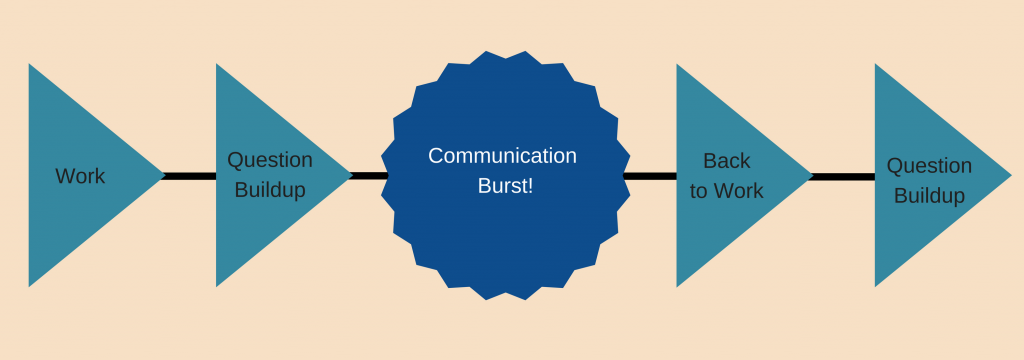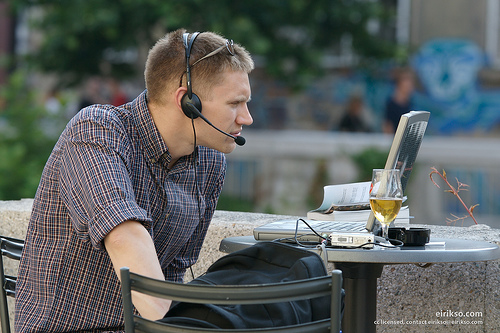A recent study recommends remote teams communicate in “bursts,” not constantly throughout the workday.
The website behavioralscientist.org, a site discussing human psychology, published the following article on May 29:
“Bursty” Communication Can Help Remote Teams Thrive – Behavioral Scientist
I find the fact that a psychology website brings up Remote Work very important. Adoption of Remote Work is more a question of psychology than anything else.
The tech IS available, and has been for years. Implementation only takes days. But before that you need the company to accept the notion of Remote Work (what many call ‘buy-in’). After implementation, you need work habits to change, adapting around the new Remote Work option.
These are both a matter of human beliefs, attitudes, and habits – all aspects of human psychology.
So let’s examine what the BehavioralScientist.org article has to say.
Study Done on Remote Team Productivity when Using 2 Communication Methods
The article discusses a study which tested remote teams’ communication strategies. Specifically, they measured two different communication methods:
- Standard communication: Communication occurred constantly, in small exchanges, all throughout the day. Lag time often occurred between initial requests and responses.
- “Burstiness”: Communication “bursts” – rapid exchange of messages within a short time period – occurred sporadically during the workday. Then people went back to their work until the next “burst.”
The result? The teams using “burstiness” were more productive, more coherent, and had higher-quality work at the end of the day. Findings included this statistical result: “A one standard deviation increase in burstiness lead to a 24 percent performance increase.”
24% improvement is pretty darn significant for a controlled trial!
What This Means: Nonstop Conversation Trickle Disrupts Work. Communication Bursts Allow Focused Work.
I’ve seen this reflected in my own telecommuting. As you’re working, you begin to run into snags. I need this file from Sharon…are we debuting the new trial version on Thursday or Monday…
You ask the co-worker about the snag. But co-workers, wrapped up in their own work, don’t answer right away. What do you do? You either a) keep bugging them, or b) wait (causing what I call ‘Question Buildup’).
Within a normal office environment, you could go ask them & get back to work. But that creates another type of disruption. You go to Sharon’s desk, ask her a question, and get an answer. Then someone else asks Sharon a question & gets an answer. Then someone else…
How much work can Sharon accomplish like this? None!
A constant trickle of quick conversations, facilitated by an easy-to-access office environment, just RUINS productivity. But without those questions answered, you get Question Buildup, and your work can’t progress. It creates a bad Catch 22.
“Bursty” communication periods can solve this problem, according to the study.
Here’s how I envision using “burstiness” during the workday. (Forgive the crudely-basic infographic; I am not a designer.)

“Burstiness” and its role in the remote team’s workday.
- All team members proceed with their work.
- Questions begin to build up among them.
- One or more persons calls for a Burst session.
- Everyone stops their work & converses with the team.
- Questions are answered, issues resolved, direction obtained. Could take as little as 5 minutes.
- Team members go back to work.
- Repeat cycle if necessary.
Communicating in Bursts Lets Remote Workers Do Their Work, AND Stay Productive. Try It!
Take a minute and read the BehavioralScientist.org article. It’s an excellent study, and a short read.
We glean a strong two-part point about remote work from the study results:
- Communication is key for ALL teams, but especially remote teams. Doing so productively translates to big productivity gains.
- Remote Work is more a matter of psychology than procedure. If the psychological acceptance isn’t there, someone will sabotage the whole effort.
How do you handle communication when working remotely?

1 comment